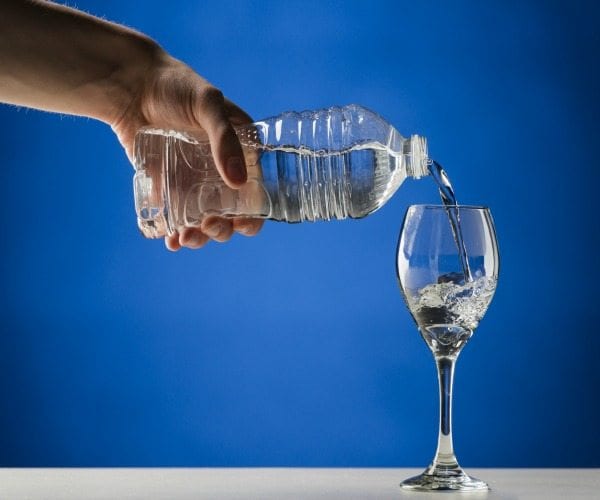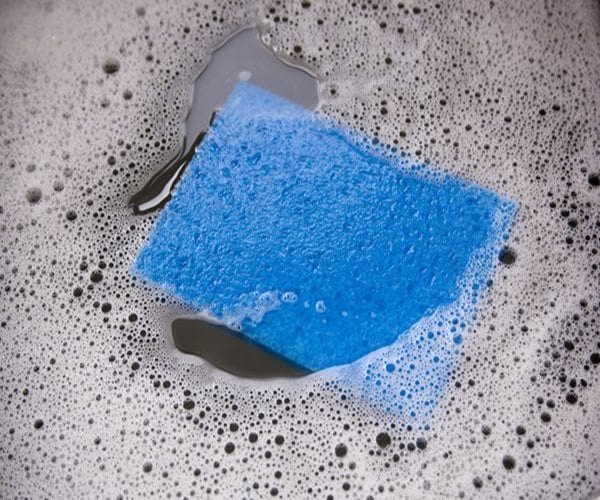
by Dr Alex Jimenez DC, APRN, FNP-BC, CFMP, IFMCP | UTEP (Local) RSS
The UTEP track and field team will be sending nine student-athletes to compete at the 2017 NCAA Championships this week in Eugene Ore., starting Wednesday June 7 through Saturday, June 10.
Wearing the Orange and Blue for the women’s team will be Tobi Amusan (100m Hurdles), Samantha Hall (Discus Throw), Lucia Mokrasova (Heptathlon), Winny Koech (10,000m) and Lilian Koech (800m).
On the men’s side, Emmanuel Korir (800m and 4x400m relay), Michael Saruni (800m and 4x400m relays) and the 4x400m relay ream of Korir, Saruni, Asa Guevara and James Bias will represent the Miners at the NCAA Championships.
Tobi Amusan | Sophomore | Hurdles
The Sophomore makes her return to the NCAA Championships after taking runner-up last year. Amusan heads into the championships with the fastest qualifying time, when she clocked 12.57w at the West Region Prelim. The Nigerian native has yet to lose a 100m hurdles in five races thus far.
The school record holder will compete in the semifinals for the 100m hurdles on Thursday at 6:32 p.m. MT on ESPN2. A total of eight runners out of the 24 will advance to the finals. Three heats will be held (eight athletes in each heat) and the top two finishers from each heat plus the next best two fastest times will advance.
Samantha Hall | Senior | Discus
The senior will make her final appearance in the Orange and Blue at the national stage for the second time in her career after earning 13th overall at the 2015 NCAA Championships. Hall holds the school record in the discus throw with a mark of 58.50m and qualified for the NCAA Championships tossing for 56.50m at the West Region Prelims.Hall will compete on Saturday’s final starting at 4:05 p.m. on ESPN3.
Lucia Mokrasova| Junior | Heptathlon
Mokrasova will take the track in the heptathlon on Friday and Saturday morning for the Miners. The junior broke her previous school record earlier this year at the Texas Relays, she scored 5,671 points.
That point total for Mokrasova ranks her 12th nationally headed into the competition. The Slovakia native will take the track on Fridayat 1:30 p.m. on ESPN3.
Winny Koech | Sophomore | 10,000m
Koech will compete in the 10,000m Final on Thursday night at 8:08 p.m on ESPN2. Koech has clocked a personal-best 33:51.31 when she ran at the Mt. SAC Relays earlier this year. The C-USA champion ranks 17th among the 24 student-athletes competing, after running a qualifying time of 34:39.41. This will be the first trip to the national stage for Koech.
Lilian Koech | Sophomore | 800m
Making a her first appearance at the national stage, the Kenya native will run in the 800m semifinal on Thursday at 7:14 p.m on ESPN2. Koech clocked her personal best earlier this year with a time of 2:04.68 at the Brutus Hamilton Challenge. The sophomore earned one of the automatic qualifying spots from the West Region Prelim with a time of 2:07.68.
Emmanuel Korir | Freshman | 800m
The Kenya native has taken track and field by storm this year. Breaking numerous meet records and school records, including the indoor 600m world record (1:14.97). Korir is undefeated in the 800m through three races. The freshman clocked the fastest-time in the 800m earlier this year with a time of 1:43.73 at the Brutus Hamilton Challenge. Korir is just one of three athletes in the world to run sub-1:44 in the 800m and sub-45 in the 400m.
The All-American will take the track on Wednesday in the 800m semifinal starting at 7:14 p.m on ESPN2.
Michael Saruni | Freshman | 800m
Saruni has been just as spectacular as his teammate Korir. Saruni clocked a personal best 1:45.92 at the Texas Relays beating the 2012 Olympic silver medalist (Leonel Manzano) and the collegiate record holder (Donavan Brazier). Saruni heads into the championships ranked sixth in the nation.
Men’s 4x400m Relay Team
The Men’s 4x400m relay team will consist of both freshman 800m runners, senior James Bias and junior James Bias. The team registered the second-fastest time in program history with a time of 3:03.15 and ranks as the fourth-fastest qualifying time to the NCAA Championship. The team will compete on Wednesday in the 4x400m relay semifinal with the final set for Friday at 8:51 p.m. on ESPN.
You can watch the 2017 NCAA Division I Outdoor Track and Field Championships live on the ESPN family of networks. Both the final day of the men’s championship and women’s championship will be aired in prime time on ESPN.
For live results and breaking news be sure to follow @UTEPTrack on Twitter and uteptrack on Instagram.

by Dr Alex Jimenez DC, APRN, FNP-BC, CFMP, IFMCP | UTEP (Local) RSS
The former Chapin High School hurler wrapped up her UTEP career ranked tied for third in wins (24) and second in saves (five).
Staff Report June 7, 2017 86 Views
IRVING, Texas – UTEP softball’s Kaitlin Fifield is among 14 honorees for the Spring Conference USA Spirit of Service Award, as announced on Wednesday. The award is given to the student-athletes who donate their time in the community, have a high academic standing and excel in their respective sports.
Fifield donated much of her time to community service as the El Paso native worked with the Miracle League on multiple occasions, mentoring baseball teams with disabilities. Fifield assisted with instructions to kids at UTEP Softball’s Free Clinic.
Fifield also made time to help with UTEP events, which included Orange Fever Fiesta (fundraising event) and the UTEP-Army football game (hospitality/greeting).
Fifield’s classroom efforts were apparent as she was named to the C-USA Commissioner’s Honor Roll all four years at UTEP.
The former Chapin High School hurler wrapped up her UTEP career ranked tied for third in wins (24) and second in saves (five).
Check Also
Emmanuel Korir was named to The Bowerman Watch List for the third time this outdoor …

by Dr Alex Jimenez DC, APRN, FNP-BC, CFMP, IFMCP | UTEP (Local) RSS
With the release of Conference USA’s TV schedule on Wednesday, UTEP’s 2017 football slate has been updated.
The Miners will appear on television six times over the course of the season, including five road games – at Oklahoma (Sept. 2, FOX), at Army (Sept. 30, CBS Sports Network), at Southern Miss (Oct. 14, STADIUM), at Middle Tennessee (Nov. 4, beIN Sports) and at North Texas (Nov. 11, ESPN3). STADIUM is formerly ASN and Campus Insiders.
UTEP’s home matchup with Arizona (Sept. 15) will air on ESPN with an 8:15 p.m. Mountain start time.
Times are set for nine of the 12 games, the exception being the final three games in the month of November, which will be announced at a later date.
UTEP’s home games versus Rice (Sept. 9), WKU (Oct. 7) and UTSA (Oct. 28) will all kick at 6 p.m. Mountain time. UTEP Football Season Tickets are on sale now by calling (915) 747-6150.
2017 UTEP Football Schedule
Date Opponent Time Network
Sept. 2 at Oklahoma 1:30 p.m. FOX
Sept. 9 Rice* 6 p.m.
Sept. 15 Arizona 8:15 p.m. ESPN
Sept. 23 at NM State 6 p.m.
Sept. 30 at Army 1:30 p.m. CBS Sports Network
Oct. 7 WKU* 6 p.m.
Oct. 14 at Southern Miss* 5 p.m. STADIUM
Oct. 28 UTSA* 6 p.m.
Nov. 4 at Middle Tennessee* 5:30 p.m. beIN Sports
Nov. 11 at North Texas* TBA ESPN3
Nov. 18 LA Tech* TBA
Nov. 25 at UAB* TBA
* Conference USA game
All times Mountain

by Dr Alex Jimenez DC, APRN, FNP-BC, CFMP, IFMCP | Natural Health, Wellness
Remember the days when, if you wanted a glass of water, you poured it from the kitchen sink tap? This seems so quaint now, considering the vast number of different types of water available, including alkaline water. But is this specialty water better for your health?
Yes, says Dr. Keith Kantor, a natural health expert an author, who says alkaline water balances the body’s pH level, which can help ward off disease.
The body’s pH level refers to the acidity or alkalinity of blood. The lower the pH, the more acidic the blood. The normal blood pH is tightly regulated between 7.35 and 7.45.
“Our body keeps our pH level at between 7.35 and .45 and it does that very well. Every time our body produces an acid, a sodium bicarbonate molecule is produced to neutralize it,” says Kantor, a natural health expert and author.
“Because the American diet is very acidic, acid can build up in the body, which is why it’s beneficial to drink alkaline water,” says Kantor, the national spokesman for Optimal Harmony Water, which manufactures a type of it.
This buildup of acid can result in acidosis (an excessively acidic condition of body fluids and tissues), and this leads to inflammation, he adds.
“Alkaline water can help with a number of health problems, including acid digestion, heartburn, low energy levels and infections, nausea, and dehydration, but the biggest one is inflammation, which leads to diabetes and obesity,” he says.
But is alkaline water really healthier than tap water?
“The FDA has not studied or reviewed the science relating to alkaline water and cannot speculate or speak to a potential benefit,” says Lyndsay Meyer, spokeswoman for the U.S. Food and Drug Administration.
As a registered dietitian, Vicki Shanta Retelny says her clients often ask her about different types of water.
“I don’t think there’s enough research to say that this type of water is going to be beneficial for fending off disease,” says Retelny, author of “Total Body Diet for Dummies.”’
“If you live in an area where the tap water is hard, it could be helpful, but what most people need to be concerned with is simply whether they are drinking enough water,” she adds. (Hard water is high in dissolved calcium and magnesium.)
“There may be too much iron, sulfur or even arsenic in your tap water,” she notes.
Of course, alkaline water isn’t the only specialty water available these days. Retelny’s clients often ask her about other types of waters as well, including the debate over whether tap or bottled water is best, she says.
According to her, most tap water is generally as good as bottled.
“People spend a lot of money on bottled water but it doesn’t mean that it’s healthier than tap. Usually, it’s not really necessary,” she says.
“Some people like bottled water because they want to bring their water with them on the go, and it’s measured, so they know they are drinking enough. But tap water can be just as beneficial,” she says.
Also, although people like to believe their bottled water comes straight from the spring, it does go through a bottling process, Retelny notes.
In addition, environmentalists are concerned about the buildup of plastic water bottles, she says.
Most Americans get their tap water from a water company, which is required to publicly list its ingredients, so you can call your company to find out, she notes.
But what about specialty, or designer waters, like vitamin water. According to Retelny, they aren’t necessarily healthier either.
“Vitamin water sounds healthy, but along with the vitamins comes flavorings, colors and sugar. You need to be aware of these additions because the calories can add up,” she says.
“Also, it’s difficult to know exactly how much of vitamins are in that water, and sugar-free ones may have artificial sweeteners,” she adds.
“Ordinarily, I don’t recommend vitamin water because I think you should get your vitamins from the foods you eat,” Retelny adds.
This goes for sports drinks as well, she says.
“Drinks with added potassium and sodium are there to benefit people who are sweating because they are participating in sports, she says.
“They can be beneficial for athletes, but most people don’t need them,” Retelny adds.
To add flavor to chilled water, Retelny recommends these additions:
- Lime, basil and crushed berries
- Cucumber, mint and strawberries
- Apple cider vinegar, honey and cinnamon
- Rosemary, mandarin orange
- Lemon, ginger and agave nectar

by Dr Alex Jimenez DC, APRN, FNP-BC, CFMP, IFMCP | Diets, Fitness, Pregnancy
Women who drink diet drinks while pregnant almost double the risk that their child will be overweight or obese at 7 years of age, says a study lead by researchers at the National Institutes of Health. Childhood obesity is known to increase the risk for health problems later in life, such as diabetes, heart disease, stroke, and some cancers.
Researchers found that as the volume of amniotic fluid increases, pregnant women tend to increase their consumption of fluids. To avoid extra calories, many women replace sugar-sweetened soft drinks and juices with beverages containing artificial sweeteners.
Previous studies of adults have found that artificially sweetened beverages encouraged weight gain, and the study authors sought to discover if drinking diet beverages during pregnancy had an effect on the weight of children.
“Our findings suggest that artificially sweetened beverages during pregnancy are not likely to be any better at reducing the risk for later childhood obesity than sugar-sweetened beverages,” said the study’s senior author, Cuilin Zhang, Ph.D.
“Not surprisingly, we also observed that children born to women who drank water instead of sweetened beverages were less likely to be obese by age 7.”
The researchers limited their analysis to data from more than 900 pregnancies that were complicated by gestational diabetes, a type of diabetes that occurs only during pregnancy.
Approximately 9 percent of these women reported consuming at least one artificially sweetened beverage each day. Their children were 60 percent more likely to have a high birth weight, compared to children born to women who never drank sweetened beverages.
At age 7, children born to mothers who drank an artificially sweetened beverage daily were nearly twice as likely to be overweight or obese.
Drinking a daily artificially sweetened beverage appeared to offer no advantages over consuming one sweetened by sugar. At age 7, children born to both groups were equally likely to be overweight or obese.
Women who substituted water for sweetened beverages, however, reduced their children’s obesity risk at age 7 by 17 percent.
Scientists aren’t sure why drinking artificially sweetened beverages compared to drinking water may increase obesity risk. The authors cited an animal study that associated weight gain with changes in the types of bacteria and other microbes in the digestive tract.
Another animal study suggested that artificial sweeteners may increase the ability of the intestines to absorb the blood sugar glucose. Other researchers found evidence in rodents that, by stimulating taste receptors, artificial sweeteners desensitized the animals’ digestive tracts, so that they felt less full after they ate and were more likely to overeat.
According to the Centers for Disease Control and Prevention, the percentage of obese children has more than tripled since the 1970s. Today, 1 in 5 children between the ages of 6 and 19 are obese.
In addition to increased health risks as adults, obese children also have an increased risk of chronic health problems, such as asthma and Type 2 diabetes. They are also more likely to be bullied, and to suffer from depression and lower self-esteem.

by Dr Alex Jimenez DC, APRN, FNP-BC, CFMP, IFMCP | Diets, Fitness
For years, you probably have been told that wheat bread is far better for you than its white counterpart, but a small, new study suggests that maxim may not hold true for everyone.
Researchers looked at how quickly blood sugar levels rose after eating (a process called the glycemic response) either white bread or sourdough-leavened wheat bread. The researchers found that the response seemed to vary by person, and that some people didn’t have a bad glycemic response to white bread.
“Our study suggests that, in terms of glycemic responses, different people respond differently to even the same meal,” explained study author Eran Segal, from the Weitzman Institute of Science in Rehovot, Israel.
“In the context of white bread, this means that some people respond badly to white bread and should probably avoid it, while others have a healthy response to it, given what we measured,” Segal said.
“In a broader sense, what this means is that the ‘one-size-fits-all’ diets that are given to the population as a whole, without personalization, are probably not optimal for everyone,” added study co-author Dr. Eran Elinav, who’s also from the Weitzman Institute.
The researchers theorized that differences in the gut microbiome (the natural bacteria living in a person’s intestine) may explain why people respond differently to different breads. The researchers added that they were able to predict what a person’s glycemic response would be to a particular bread based on the makeup of their microbiome.
Both Segal and Elinav did report they are paid consultants for a company that offers personalized dietary advice based on an individual’s gut microbiome.
At least one nutritionist wasn’t convinced that people should give up on whole grains.
“This small, short-term study does not offer a free pass to eating tons of highly processed white bread,” said Samantha Heller, a senior clinical nutritionist from New York University Langone Medical Center.
“Epidemiological research has shown that people who eat more whole grains, such as whole grain breads, crackers, cereals, brown rice and quinoa, have a reduced risk of type 2 diabetes, heart disease, inflammation, obesity and certain cancers,” Heller noted.
In addition, she said, whole grains have a balance of vitamins, minerals and other nutrients that white bread doesn’t. Plus, Heller said, fiber is the “preferred meal for gut microbiota.”
The study included 20 people from Israel. They were between 27 and 66 years old. Eleven were female, the researchers said.
Each volunteer spent a week eating white bread and a separate week eating artisanal sourdough-leavened whole wheat bread.
They ate bread first thing in the morning. Half the time, they were allowed butter on their bread. They couldn’t eat anything else beginning the night before, and then for two hours after eating the bread. They also weren’t allowed to exercise for two hours after eating, because all of these things can alter the glycemic response.
Across the groups, the researchers found a similar response to the breads when averaged together. There were no significant overall differences based solely on the bread and glycemic response. The researchers also said there didn’t seem to be a difference in the gut microbiota based on which bread was eaten.
“Our study challenges the common belief that types of food that are considered healthy are indeed healthy. We know that people are different in their genetic makeup and lifestyle, and here we show that people have rather stable and person-specific microbiomes,” said Avraham Levy, one of the study’s researchers. He’s also from the Weitzman Institute.
“These differences between people affect how they respond to even the same meals, which means that foods which are considered healthy may not be as healthy for everyone, and vice versa,” Levy said.
The scientists noted that more research needs to be done. Funding for the study came from the Israeli Ministry of Science, Technology and Space, as well as from private foundations and donors.
In the meantime, a number of groups recommend eating whole grain foods instead of processed white foods. These groups include the U.S. federal government, the American Heart Association, the American Cancer Society, the American Diabetes Association and the Academy of Nutrition and Dietetics.
The study was published June 6 in the journal Cell Metabolism.

by Dr Alex Jimenez DC, APRN, FNP-BC, CFMP, IFMCP | Natural Health, Wellness
Your home is your castle, and also your haven. But common household items may be turning your sanctuary into a hazard and increasing your risk for colds, viruses, and food poisoning as well as deadly diseases, such as Alzheimer’s and cancer.
Below are five common, but possibly dangerous, items you should consider replacing … now.
Aluminum pots and pans. Aluminum pots and pans may increase your risk for neurological diseases because small amounts of aluminum leach into foods, especially those containing acids. Experts have linked aluminum to Alzheimer’s disease as well as Parkinson’s disease, kidney and liver damage, weakened bones, and multiple sclerosis.
“Aluminum is cumulative, and even small doses over time become highly toxic,” board-certified neurosurgeon Dr. Russell Blaylock tells Newsmax Health. “It’s a powerful neurotoxin. When aluminum combines with certain acids, such as those in orange juice, aluminum absorption is increased 11-fold,” he says. “If you’re cooking with fluoridated water, the aluminum and fluoride bind, so you’re producing aluminum fluoride, an extremely toxic compound.”
The worst scenario for a health disaster involving cookware is boiling water for tea in an aluminum kettle or pan, says Blaylock. “Black tea is already high in aluminum and fluoride, and you’d be getting very high levels of aluminum fluoride. Replace aluminum pots and pans with stainless, says Blaylock.
Scratched “non-stick” cookware. Manufacturers use the chemical PFOA (perfluororctanoic acid) when making Teflon (also known as polytetrafluoroethylene or PTFE), the “no stick” cookware. But the pots and pans that are so easy to clean could be increasing your risk for several conditions, including breast cancer, preeclampsia, thyroid disease, and ulcerative colitis.
Teflon and similar coatings, such as T-Fal and Silverstone, emit PFOAs when heated to a high temperature. The fumes can cause flu-like symptoms in people, nicknamed “Teflon flu.” A study by the Environmental Working Group found that heating a nonstick pan to 680 degrees on an ordinary electric stove released six toxic gasses including two that are known to cause cancer.
Studies have found that empty pans can reach 800 degrees in only five minutes, and some studies show that enough PFOAs are emitted to kill pet birds at temperatures as low as 325 degrees.
At high temperatures, Teflon also releases tetrafluoroethylene, a known carcinogen, and another chemical called monofluoroacetic acid, which can be fatal even in small amounts. When heated to 887 degrees, Teflon also emits perfluoroisobutene, a substance used in chemical warfare. When pans are scratched, the harmful chemicals are released at even lower temperatures.
Older cookware, scratched or not, is more likely to emit toxins, and many manufacturers have agreed to produce non-stick cookware that would not emit PFOAs. To be on the safe side, replace questionable pots and pans with stainless steel. Dr. Blaylock warns of one exception — don’t buy Chinese stainless. “It is usually extremely low-grade and it will degrade,” says Dr. Blaylock.
Kitchen sponges. The Centers for Disease Control (CDC) estimates that food poisoning sickens 1 in 6 Americans every year (48 million). Of those, 128,000 are hospitalized and 3,000 die. Salmonella and E. coli, two of the most common, hide on kitchen surfaces and in sponges, which are usually wet and provide an ideal environment for germs to multiply.
To stay safe, replace sponges on a regular basis. Sanitize wet sponges by microwaving them for two minutes, washing in the dishwasher, or placing them in boiling water laced with a couple of tablespoons of vinegar for three or four minutes.
Fire extinguishers. You probably have at least one fire extinguisher in your home, but how long has it been since you’ve even given it a second look? Fire extinguishers can de-pressurize over time and be worthless in an emergency. Check the label to see how long yours should last — some are expected to work for only about five years.
The National Fire Protection Association recommends non-rechargeable units be replaced every 12 years and rechargeable ones tested and recharged every six years. If your home is humid, your extinguisher may need replacing more often.
Check the pressure gauge on your extinguisher every month to make sure it falls in the green area. If not, replace it immediately. Also check for corrosion, cracked hoses, and broken handles — all indicate your fire extinguisher needs to be replaced.
Plastic food containers. Bisphenol A (BPA) is used to make plastics used in food and beverage containers and is often used in the lining of metal cans. BPAs are proven endocrine disruptors and can increase the risk for breast and prostate cancer, heart disease, and obesity. “BPA actually disturbs the hormone production in our bodies,” Dr. Erika Schwartz, a leading expert on hormones tells Newsmax Health.
Avoid BPA by choosing fresh foods and those in glass containers instead of those in cans. Buy plastic containers with the recycling labels No. 1, No. 2, No. 4, and No. 5 on the bottom. Avoid those with No. 3, No. 7, or PC (polycarbonate). Cloudy or soft containers don’t contain BPA.











